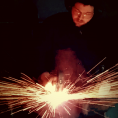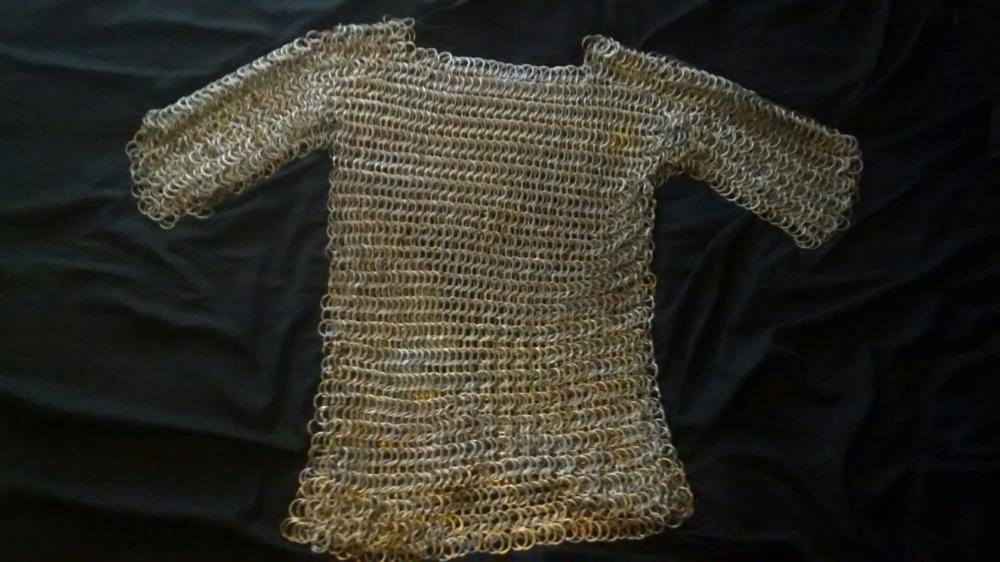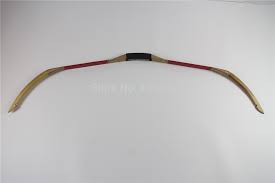-
Posts
733 -
Joined
-
Last visited
Content Type
Profiles
Forums
Articles
Gallery
Downloads
Events
Everything posted by Will W.
-
Well, for what it's worth, oil has a higher boiling point than water, and quenches slower. Brine has a lower boiling point than water. Logically, wouldn't it quench faster? It's worth noting that this is little more than conjecture. I'm not an expert on the subject.
-
MailleMas I ran a TIG for a while that could be turned down to 5 amps (Miller dynasty iirc.) Best machine I think I ever ran a bead with. Knew a guy who welded two beer cans together with it, I couldn't believe my eyes. I lost a bet that day. Anyways, it does seem like it comes down to spending money or spending time. And quite frankly, I would rather spend the time haha. Next time the forge is running, I may try to weld a few rings. Not having a TIG around anymore, it may be my best bet.
-
Be warned: This is about to get off topic Bigfootnampa I have mixed feelings about Lars Anderson. Sure he is skilled. No question. But much of what he propagates is not historic fact. He does a lot of interesting trick shots with his bows, but I'm pretty sure archers did not jump around like that, besides in Hollywood and video games maybe. His whole point about how archers held their arrows as well... Don't get me started haha. Historically, I think archers typically stood still, well behind the foot soldiers, or atop the walls of a city, and their strength was their numbers.
-
Charles I agree. When you hold, I find, you end up overcompensating and making a bad shot. On top of that, muscle fatigue can cause shaking, and the pressure on your fingers for too long can cause a poor release. It's far better IMO to draw, line up, and just release. It's amazing just how accurate your instincts can be.
-
Thomas And I thought I was tough for being born on the floor in a hospital.
-
Decor anvil... I am unfamiliar with this term. Is that the anvil that you forge on in the dining room? Personally, I prefer to forge in the kitchen. Better ventilation, ya know?
-
Frosty I know exactly what you mean. I have 0 experience with metal bows, but I definitely know the longbow/ short bow comparison. I tend to make longbows (almost always over 60") just because I hate the hand shock that short bows give you. I found, with myself and others, that the anticipation of the hand shock from short bows ends up causing a flinch and throwing shots off. That, and perfectly tillering a short bow is far more difficult. It needs to be PERFECT. Recurves are kind of in the middle, I think. Ahem to that.
-
Interesting. That poor pritchel hole looks more like a hardie hole now haha.
-
That second one has a strange look to it. I can't place my finger on it. Maybe it's how the heel and horn come in at such a straight angle rather than a curve...? What kind of anvil is that?
-
I was mistaken. I thought he meant groups who did smelting haha. That is interesting though, I am going to look further into this. Thanks. That is awesome, about the bloom I mean. Seems like it would be a lot of fun.
-
I've checked for things of that nature in my area, with little success. But, you may know better than I. I'm in central New York State. I'm just realizing how off topic this thread has become haha.
-
Thats really cool. I've always wanted to see a bloomery in action, but to take part in it would be pretty interesting. I am beyond curious, what did you do with the bloom when the smelting was complete?
-
Markus Davis That sounds fantastic! I would love to see all of that. Seems like it would be a great time. Thomas That seems like a lesson that only needs to be learned once haha. As one who burns charcoal in my forge, I can only imagine the shower of sparks that would come out of a bloomery. That sounds very interesting nonetheless.
-
The SCA? Correct me if I'm wrong, but they do historical reenactments of combat, right? If so, I must say, that is awesome.
-
I considered ordering them, but to be get right to the point, I'm cheap haha. It may be my only option though. Thanks for the tip Thomas, I'll try to shoot over there and ask some of those guys. If I had a tig welder around the shop, I would just fuse them together and call it good. No filler metal needed.
-
..... Maybe.... OK, yes it was haha.
-
6 in 1 hauberk I completed a while back. Just butted maille. 3/4" ID (I prefer them large for 6-1) 16 gauge rings. Picture is not great, sorry.
-
I have no clue what section this belongs in, sorry. I do a lot of chainmail. I make some jewellery, but mostly my work is more armor-like, hauberks, coifs, etc. Most of my completed stuff is just butted maille, in every gauge and ring size I could think to use, but over about the last year, I've been doing a lot of riveted maille, with the goal of making a whole hauberk, a daunting task indeed. I have a system down that works quite well, I usually only mess up 1 out of every ~20 rings. It takes forever, though, weaving all riveted rings. I've read that, more towards the late middle ages (possibly high middle ages) they began using alternating rows of solid and riveted rings, but... Where in the world do I get soild rings? Or, more specifically, how can I make them, or salvage something not intended as chainmail? I read that back then, they were punched from sheets of steel, or iron, but i like round rings (flattened only where riveted), not flat rings. My current project is 14 gauge rings, 3/4" ID (I think that's what the madrel is) and in a 6-1 pattern, so something similar to those specs. I've considered forge welding some rings, but I don't think that's even remotely feasible. I considered MIG welding rings and cleaning them up, but time consuming would be an understatement. Washers are also flat so, idk. Any ideas? I'm lost.
-
Gote I have never heard of an S shaped bow. The entire idea is fundementally flawed in my mind. I could be wrong, idk. What I believe you are referring to there is a horse bow. They are similar to recurve bows, but with A LOT more recurve when unstrung. Some are so heavily recurved, they look more like a "C" when unstrung, rather than a "(" from a typical recurve (keeping in mind both are bent in the opposite direction of their bend when you string them.) This. The Mongolian bowyer's used no metal. Most didn't even use wood, because of the lack of good material. They were usually made from a composite of a bamboo back supported by a sinew backing over the bamboo, and animal horn belly for the limbs, and solid horn sayahs, with natural adhesives. The speed of the arrow is determined by how fast the string moves, which is determined by how fast the bow moves back to its brace height, which is determined by material used, thickness and width of limbs, yada, yada. The "angle" of the string, as you say, is important, yes. Take a bow that's 50# at 28" draw length, and draw it back to 32" (therefore increasing "angle"), it may be 60# now. But that may also break your bow if it is not tillered properly. Apologies for getting a little off topic. Frosty That is all very interesting. I can definitely see the rebound being dead from an aluminum bow. How was the hand shock? You say " pleasurable to shoot" so I imagine it wasn't so bad? And did the metal bows take a set badly? I expect it to be much worse than wood, not certain though.
-
Looks pretty clean. Nice work.
-
Thomas Mostly because of the size. The smaller you make a bow, the more pressure is put onto each limb in order to achieve the same draw weight. A 72" bow (common for an english longbow) has less pressure on the limbs compared to a 58" or 60" bow (common for recurves like horse bows) despite being very similar draw weights, typically. Once you get down to the size crossbow prods need to be (rarely over 24"), metal is superior to wood, simply because wood usually cannot withstand the pressure. Plus, you can use the stirrup (part your foot goes into) on a crossbow to help you pull it back, something longbows obviously dont have. That helps compensate for the imense draw weight the metal provides. For a longbow though? Wood is definitely superior, hands down. If I remember correctly, most ballistas and similar seige engines used wooden limbs as opposed to metal ones, even though they are just ramped up crossbows, for the above stated reasons.
-
Kind of an old post, but I'll throw my two cents in. I actually have more experience making bows than at the forge. A steel bow simply would not work well. When you bend a bow, pulling the string back, the wood fibers are resisting you, and they want to return to straight, hence, you release the string, wood bends back as straight as the string allows it, and launches the arrow. Steel, put simply, doesn't really want to go back to straight. Spring steel, tempered correctly, may try to snap back, but nowhere near as efficiently as wood. And, if not tempered correctly, all you would have is a bent piece of metal. Plus, steel is harder to bend, so the bow would have to be very thin in order to be able to draw it back over and over, which increases the likelyhood of breaking. I have broken many bows, back when I started, and it would be terrifying if they were made of any metal and broke! The tiller (evenness of both limbs bending in relation to each other) would also be hard to achieve. All in all, not worth it. Make a drawknife and a rasp, and thats about all you need to make a good wooden bow. That's all I use.
-

Looking for advice about selling knives
Will W. replied to Will W.'s topic in The Business Side of Blacksmithing
JHCC, I agree completely. Smoggy, I have a couple of posts on this site of my knives, not many though. I could try to get a portfolio together. Unfortunately, I usually don't make sheaths, which seems like a deal breaker to me. Who wants a knife without somewhere to keep it? I need to get some leather, and start making a few, no doubt. 1776, I've considered this as well. Would I really even make enough selling them to pay for liability? That's my main concern. Always a consideration though. -
Oh, I see. I have an old Fisher that is the same, cast body with steel face. Little bit better shape, however haha.
-
Wow. That anvil has seen better days! Did it give any more info when you looked them up? Did they have wrought iron bodies? I'm just curious at this point. Anvils are expensive, no doubt, but that seems like a bit to pay for one that has little function as is.


